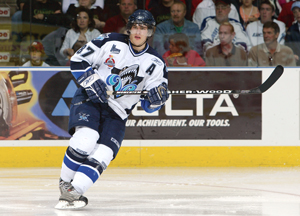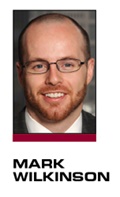The NHL and its players union have begun their labor negotiations for a new contract. The current agreement expires in September, and while details have been sparse, so far the negotiations appear to have focused primarily on economic topics such as revenue sharing and free agency. One issue that has not yet surfaced, though it easily could, involves the concept of age minimums for participation — meaning that a player could not play in the NHL until he attains a certain age (for example, 21). Currently, the NHL generally permits 18-year-old players to participate in the league if they can earn a roster spot, but that could change if college hockey can influence the negotiations.
Both the NFL and NBA have rules that function as age minimums — 21 for the NFL and 19 for the NBA. Ordinarily, price-fixing agreements and artificial barriers to competition like these would violate U.S. antitrust laws. This does not work with a labor union in the picture since unions and management necessarily have to agree about wage rates and other important terms and conditions of employment. Further, according to the theory, unions have an obligation to negotiate at arm’s length with employers or their members will eventually dump them as their collective-bargaining agent or sue them for a breach of their duty of representation (or both). So, there is no perceived need for antitrust protection against anti-competitive rules or restrictions in professional sports that result from the product of bona fide labor negotiations.
NCAA football and basketball have benefited tremendously from their pro games’ age minimums because they essentially force players into college athletics. These rules basically give the pro leagues a free developmental system as players mature and develop at no cost to the pro teams. And the players unions seemingly have no real interest in opposing age minimums because their current members presumably do not want to have to compete against talented teenagers for jobs.
Unbeknownst to most hockey observers, the commissioners of the U.S. college hockey leagues have formed an organization called College Hockey Inc., which has the stated goal of trying to raise the profile of college hockey and to encourage more players to choose college hockey over the Canadian Hockey League. The CHL has long been considered the fast track to pro hockey. Players participating in the CHL receive a small salary to cover their living expenses, and for this reason, the NCAA considers players participating in the CHL no longer amateur athletes and deems them ineligible for college hockey (with a few exceptions). Accordingly, young hockey players in North America typically have to choose between college hockey and the CHL at an early age.
More importantly, College Hockey Inc. also has said it wants to stem the tide of hockey players leaving college early for the professional ranks. Already this summer, 29 players have left college and signed professional contracts. In reference to the number of early departures, the former director of College Hockey Inc. has said that the group has met with the NHL and that “[i]t was a meeting both sides wanted to have.” College Hockey Inc. wanted to make sure it was involved in the labor negotiations so that its interests were a part of the dialogue. The powers that be in college hockey are clearly exploring a way to keep players in college, and the only real way to accomplish that would be to include an age minimum for participation in the NHL’s next labor contract.
 |
An NHL age limit might have kept Sidney Crosby in a Rimouski Oceanic uniform a few more seasons.
Photo by: GETTY IMAGES
|
Conventional wisdom suggests that the CHL would strongly oppose an age minimum for participation in the NHL since the CHL would lose its perception as the quicker route to the NHL compared to the college game. But would the CHL really put up that much of a fight? The CHL generally permits players to participate only until their 20th birthday. Accordingly, the CHL has the same financial motivation to keep their teenage stars as college hockey does. Imagine if Sidney Crosby had to play an extra season or two in the CHL — you would not find an empty seat in any rink where he played.
While players could still leave the CHL or college hockey and go directly to the minor professional leagues since the labor exemption from antitrust law would not allow the NHL to restrict participation in other leagues, the money in the minors is nowhere near NHL money, and players would not have the same financial incentive to leave. Plus, the NHL wields an enormous amount of power and influence over the minor professional hockey leagues, and especially over the young draft picks. If a drafting team tells a player the best situation for him is to stay put and play in the CHL or college hockey to continue to develop, he will most likely do so to please his prospective employer.
Although a minimum age for participation rule has not yet been proposed in the labor negotiations, there is a real possibility that it could, particularly if College Hockey Inc. and its constituency have their say and the wherewithal to influence the talks. While the justification given for age minimums in pro football and basketball is the physical and emotional immaturity of the teenage athletes, that explanation rings hollow in pro hockey. Teenage NHLers have been competing and flourishing in the league for decades, or at least have been no worse off than their older counterparts. But a more troubling byproduct of an age minimum in the NHL would require teenage players to continue to play in their developmental leagues and risk a possible career-ending injury before signing the lucrative contract they have worked for many years to attain.
With a seasonlong work stoppage in recent memory and by all accounts an aggressive bargaining posture by the NHL, the seemingly more minor contract issues (like an age minimum) could easily fly under the radar. Ultimately, we may have to wait until the deal is done to see if an age minimum found its way into the new labor contract.
Mark Wilkinson (msw@franczek.com), an attorney at the Chicago law firm Franczek Radelet, represents private and public sector employers in all aspects of labor and employment law. He played four years of Division I hockey at Western Michigan University.





